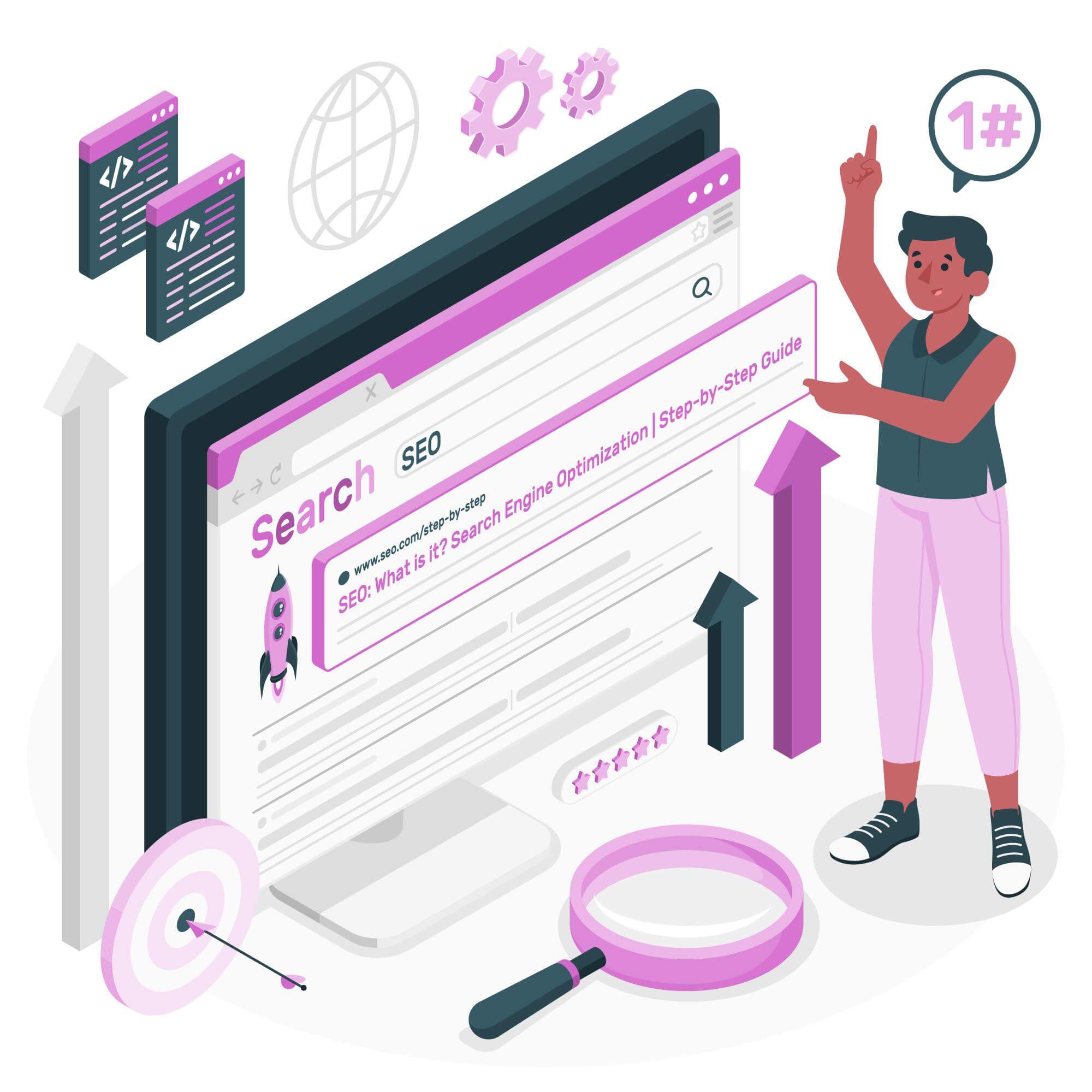
In the ever-evolving world of search engine optimization (SEO), simply ranking number one in the traditional blue links is no longer the sole objective. Google's Search Engine Results Pages (SERPs) have transformed from a simple list of websites into a dynamic, interactive, and information-rich experience. This evolution is driven by SERP features, and understanding what they are and how to optimize for them is paramount for any business looking to dominate the search landscape and drive significant traffic.
This in-depth guide will explore the multifaceted world of SERP features. We'll break down what they are, explore the most impactful types, and provide actionable strategies to help your website capture these coveted spots.
What Are SERP Features, Exactly?
SERP features are any results on a Google SERP that are not the traditional organic search results. They are enhanced, visually distinct elements designed to provide users with direct answers, more context, and a richer search experience without necessarily having to click through to a website.
These features can appear above, below, or alongside the standard organic listings and come in various forms, from answer boxes and carousels to interactive maps and product ratings. For businesses, appearing in a SERP feature means greater visibility, increased brand authority, and a higher potential for clicks and engagement. In essence, they are prime digital real estate.
Why SERP Features Are a Game-Changer for SEO
Optimizing for SERP features is no longer a niche strategy; it's a fundamental component of modern SEO. Here’s why they are so crucial:
- Increased Visibility and Brand Awareness: SERP features, especially those at the top of the page like Featured Snippets, dramatically increase your brand's visibility, even if you're not in the top organic position.
- Higher Click-Through Rates (CTR): Visually appealing and information-rich features like those with images, ratings, or sitelinks can significantly boost your CTR compared to standard blue links.
- Enhanced Authority and Trust (E-E-A-T): Securing a SERP feature like a Featured Snippet or a Knowledge Panel positions your brand as an authoritative and trustworthy source in the eyes of both users and Google. This directly aligns with Google's E-E-A-T (Experience, Expertise, Authoritativeness, Trustworthiness) guidelines.
- "Zero-Click" Searches: Many SERP features aim to answer a user's query directly on the results page. While this might sound counterintuitive, owning this "zero-click" space ensures your brand is the one providing the answer, building recognition and trust that can lead to future direct traffic.
- Competitive Advantage: As the SERPs become more crowded, capturing these features gives you a distinct advantage over competitors who are still solely focused on traditional rankings.
A Deep Dive into the Most Common SERP Features and How to Optimize for Them
Let's explore the diverse landscape of SERP features and the specific actions you can take to increase your chances of being featured.
1. The Featured Snippet (Position Zero)
Often called "Position Zero," the Featured Snippet is a block that appears at the very top of the organic results, providing a direct, concise answer to a user's query. The content is pulled from one of the top-ranking pages.
- Types of Featured Snippets:
- Paragraph Snippet: A short block of text answering the "what is" or "how to" type of query.
- Bulleted/Numbered List Snippet: Often used for step-by-step instructions, recipes, or lists.
- Table Snippet: Displays data in a structured table format.
- Target Question-Based Keywords: Use keyword research to find questions your audience is asking (e.g., "what are backlinks," "how to change a tire").
- Provide Clear, Concise Answers: Directly answer the target question near the beginning of your content.
- Use Proper Formatting: Structure your content with clear headings (H2, H3), and use ordered (<ol>) or unordered (<ul>) lists for steps and lists. For tables, use proper HTML table markup (<table>, <tr>, <td>).
- Maintain a Strong Overall SEO Foundation: You typically need to be ranking on the first page of Google to be eligible for a Featured Snippet.
2. People Also Ask (PAA)
The "People Also Ask" box is an interactive feature that displays a list of questions related to the user's original query. Clicking on a question expands it to reveal an answer, which is often pulled from a webpage in a manner similar to a Featured Snippet.
- How to Optimize:
- Incorporate Q&A Sections: Create a dedicated FAQ section on your pages or naturally weave questions and answers into your content.
- Research PAA Questions: Look at the PAA boxes for your target keywords and create comprehensive content that answers those specific questions.
- Structure Content Logically: Use clear headings for each question to make it easy for Google to understand and pull the information.
- Use Schema Markup: Implement FAQPage schema to explicitly tell Google that your page contains a list of questions and answers.
3. Sitelinks
Sitelinks are additional links that appear below the main URL in a search result, directing users to specific pages on your website. They are an indication that Google understands the structure of your site and sees it as authoritative.
- How to Optimize:
- Develop a Clear Website Structure: Use a logical and intuitive site hierarchy with clear parent and child pages.
- Use Descriptive and Concise Page Titles: Ensure your page titles accurately reflect the content of the page.
- Build Internal Links: Use internal links with clear anchor text to guide users and search engines through your site.
- Submit an XML Sitemap: A well-structured XML sitemap helps Google crawl and understand your website's layout more effectively.
4. The Knowledge Panel
The Knowledge Panel is a large information box that appears on the right-hand side of the desktop SERP (or at the top on mobile) when a user searches for a specific entity (like a company, person, or place).
- How to Optimize:
- Create a Google Business Profile: For local businesses, a complete and verified Google Business Profile is the primary source for the Knowledge Panel.
- Use Organization Schema Markup: Implement structured data on your website to clearly define your company's name, logo, address, and other key information.
- Build a Presence on Authoritative Sites: Having a presence on sites like Wikipedia and other industry directories can contribute to the information in your Knowledge Panel.
- Gain Brand Mentions: Encourage mentions of your brand across the web.
5. Video Carousels
For video-rich queries, Google often displays a carousel of video results. These can appear within the main organic listings or as a separate dedicated block.
- How to Optimize:
- Host Videos on YouTube: Given that Google owns YouTube, videos hosted on this platform are more likely to appear in SERP features.
- Optimize Your Video Title and Description: Use relevant keywords in your video's title and provide a detailed, keyword-rich description.
- Create a Compelling Thumbnail: A custom, high-quality thumbnail can significantly increase click-through rates.
- Use VideoObject Schema: Embed videos on your website and use VideoObject schema to provide Google with details like the video's duration, thumbnail URL, and description.
6. Image Packs
For searches where visual content is relevant, Google will display a horizontal row or a block of images.
- How to Optimize:
- Use High-Quality, Relevant Images: Ensure your images are high-resolution and directly related to the surrounding content.
- Optimize Image File Names and Alt Text: Use descriptive file names (e.g., what-are-serp-features-guide.jpg) and detailed, keyword-rich alt text.
- Submit an Image Sitemap: Help Google discover your images by including them in an XML sitemap.
- Ensure Fast Page Load Speed: Image-heavy pages should be optimized for speed to provide a good user experience.
7. Top Stories
For newsworthy topics, the "Top Stories" feature displays a carousel of articles from authoritative news sources.
- How to Optimize:
- Publish Timely, High-Quality Content: Focus on creating content around current events and trending topics in your industry.
- Become a Google News Publisher: Submit your site to the Google Publisher Center for consideration.
- Implement Article Schema: Use structured data to mark up your news articles.
- Focus on E-E-A-T: Google prioritizes sources that demonstrate strong expertise, authoritativeness, and trustworthiness for news-related queries.
8. Reviews and Ratings (Rich Snippets)
Rich Snippets enhance a standard search result with additional information, such as star ratings, review counts, and pricing. These are particularly common for products, recipes, and local businesses.
- How to Optimize:
- Encourage Customer Reviews: Actively seek reviews on your website and on third-party platforms.
- Implement Review or AggregateRating Schema: Use the appropriate schema markup on your product or service pages to display rating information directly in the SERPs. This is a powerful way to build trust and attract clicks.
The Future is Rich: Your Path Forward with SERP Features
The landscape of search is no longer a flat, one-dimensional list. It's a rich, interactive, and feature-driven environment. By moving beyond a singular focus on traditional rankings and embracing a holistic strategy that targets these diverse SERP features, you can significantly amplify your online visibility, build unwavering brand authority, and drive more qualified traffic to your website.
Begin by identifying the SERP features most relevant to your industry and keywords. Then, use the actionable strategies outlined in this guide to create and format your content in a way that Google will favor.




 Phone Consultation
Phone Consultation
 Request a quote
Request a quote
 Text a Message
Text a Message